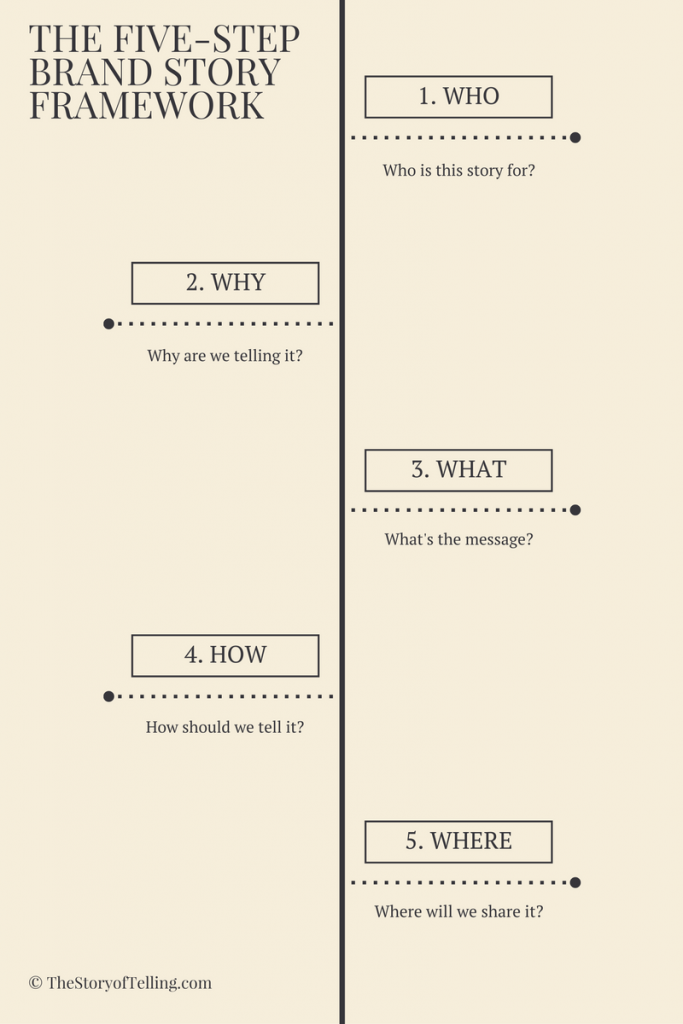Unlock the Magic in Your Story Now
Get the Free 20 questions to Ask Before Launching Your Idea workbook when you sign up for occasional updates.
Get the Free 20 questions to Ask Before Launching Your Idea workbook when you sign up for occasional updates.
Articles filed in: Storytelling
Why You?
filed in Marketing, Storytelling
 Marketing exists because we have more choices than we need and less trust than we want.
Marketing exists because we have more choices than we need and less trust than we want.
We tend to think of marketing as the thing we do last when we’re ready to close the sale—the tactics we employ and activities we undertake to convince the customer, tell our story or describe our value. It turns out that every decision we make is marketing. Everything we do (long before people are ready to make a choice) gives them reasons to care about or choose this over that, us over them.
What did you do today that will make you worth choosing tomorrow?
Image by rotesnichts.
The Five-Step Brand Story Framework
filed in Marketing, Storytelling
 Most people say the hardest part of telling their brand story is knowing where to begin. That’s because we start in the wrong place, with the wrong question—at the ‘how to’.
Most people say the hardest part of telling their brand story is knowing where to begin. That’s because we start in the wrong place, with the wrong question—at the ‘how to’.
Instead of wondering what we should say, we need to start our storytelling by asking who the story is for, and then by asking why this story will resonate with that particular audience.
Here’s the simple five-step framework to guide you through the brand storytelling process.
1. WHO —> 2. WHY —> 3. WHAT —> 4. HOW —> 5. WHERE
It’s only by understanding who for and why that we get to a better how.

Download The Five-Step Brand Story Framework to get started.
Image by Sebastian Rieger.
Conversion Vs. Connection
filed in Marketing, Storytelling
 The sales assistant took the time to explain the candle manufacturing process, brand values and founding story to the customer who was looking for a special gift for a friend. The customer, who had been buying this brand for more than ten years left delighted, with a beautifully wrapped $42 candle. And yet the company has no idea who she is and no way of continuing the conversation with her. No way to ask for input on new products and no way to tell her about special offers. No way to understand what she might want next and no way to add more value to her life—which of course would ultimately impact their bottom line.
The sales assistant took the time to explain the candle manufacturing process, brand values and founding story to the customer who was looking for a special gift for a friend. The customer, who had been buying this brand for more than ten years left delighted, with a beautifully wrapped $42 candle. And yet the company has no idea who she is and no way of continuing the conversation with her. No way to ask for input on new products and no way to tell her about special offers. No way to understand what she might want next and no way to add more value to her life—which of course would ultimately impact their bottom line.
Our sales and marketing plans are mostly optimised to convert now. We don’t think about the next sale while we’re making this one as often as we could or should.
Converting an enquiry to a sale seems like a big win in the moment, however, it’s also an important opportunity to deepen our connection with customers. Embracing that privilege is one of the surest ways to grow a business.
What difference would it make to our businessess if we questioned how we could we deepen customer connection during every interaction?
Image by Massachusetts OTT
Lucky To Have You
filed in Storytelling, Strategy
 The customers at Estabar are lucky to have Bec and her team creating a welcoming space where they serve the best food, gelato and coffee in Newcastle with love and care.
The customers at Estabar are lucky to have Bec and her team creating a welcoming space where they serve the best food, gelato and coffee in Newcastle with love and care.
Why are your customers lucky to have you?
You probably haven’t asked yourself this question in a while.
This is your invitation to do just that. If you’d like to share your reasons pop over to my Facebook page, (yes I finally have a home there) and add them in the comments.
It’s only when you know and embrace what you’re doing well that you can do more of it.
Why We Need Brand Stories
filed in Storytelling, Strategy
 Anthropologists tell us story is the universal language that has quite literally ensured the survival of the human race. Our Neanderthal ancestors told stories to pass on information that would keep the tribe safe—tales of misadventure and survival about what to fear or to embrace. We tell stories to inform and connect, to inspire and create change.
Anthropologists tell us story is the universal language that has quite literally ensured the survival of the human race. Our Neanderthal ancestors told stories to pass on information that would keep the tribe safe—tales of misadventure and survival about what to fear or to embrace. We tell stories to inform and connect, to inspire and create change.
Brands have long known that story is a powerful tool, but in business circles, we’re often more concerned with the mechanics of storytelling than the reasons we need a story to tell. Where would we be today if our ancestors had started with the mechanics without understanding why their stories mattered? Even the most primitive humans understood that their stories had a purpose.
Over the past fifty years, the outward motivation of brand storytelling (in the form of advertising) was to get attention in the moment and to acquire more customers. In many ways the ‘tell to sell’ strategy sold the power of storytelling short. Today the businesses that use story to the best advantage understand the primary reason to invest in brand storytelling is to build trust with the customers we are committed to serving and keeping, and we can’t begin to tell effective stories without understanding the trust gap we’re trying to fill.
Trust is the most undervalued and precious resource of our time. This makes storytelling one of the most important investments we can make.
Image by Dominique.
Creating A Sustainable Advantage
filed in Storytelling, Strategy
 The two bookstores on Bourke Street have very different layouts, but they mostly stock similar titles. The three nearby cafes all serve eggs, porridge or toast for breakfast. Both convenience stores along the street stock the same brands of chocolate, snacks and emergency litres of milk. And the websites that promote them were each built using identical lines of code.
The two bookstores on Bourke Street have very different layouts, but they mostly stock similar titles. The three nearby cafes all serve eggs, porridge or toast for breakfast. Both convenience stores along the street stock the same brands of chocolate, snacks and emergency litres of milk. And the websites that promote them were each built using identical lines of code.
When most businesses with access to similar resources are creating comparable products and services where does our sustainable advantage lie? Time and again we see that tangible advantages like location, quality and price aren’t enough to keep customers engaged and loyal.
The businesses that not only survive, but thrive are the ones that do what their competitors don’t do, not what their competitors can’t do. Often this is the human work of empathising, connecting and creating intangible value that’s not always seen but it’s certainly felt.
What do you do that your competitors aren’t prepared to do?
Image by Giovani Racca.
How To Leverage Results Based Marketing
filed in Marketing, Storytelling
 In sales and marketing and in life we devote an extraordinary amount of time to finding the words to describe the value we create. We labour over marketing copy, taglines and slogans that will attract, persuade and entice.
In sales and marketing and in life we devote an extraordinary amount of time to finding the words to describe the value we create. We labour over marketing copy, taglines and slogans that will attract, persuade and entice.
We get so preoccupied with ‘the marketing’ that we forget the first step in the marketing journey is to make a great product that people want and will value.
Three Steps To Leveraging Results Based Marketing
1. Make a great product that solves a real need or problem.
The only way to do this is by understanding your prospective customer.
2. Get one person, then another, then twenty to use and recommend your product or service.
Airbnb started with three guests in the founder’s apartment.
3. Show the world the impact your product has on the people who use it. Tell their story.
Use case studies, customer stories, images and testimonials.
You don’t have to work so hard to tell a story that’s true. Let your results speak for themselves.
Image by sinkdd.
The Power Of The Customer’s Story
filed in Marketing, Storytelling
 Mike, the guy who sells bus tours in Times Square doesn’t do permission marketing. He has 60 seconds to find a way to engage his prospective customer—a wary visitor in a strange city who isn’t anticipating being interrupted. Mike is competing with dozens of other street vendors. He’s also got the giant flashing billboards and a hundred other distractions in Times Square to contend with.
Mike, the guy who sells bus tours in Times Square doesn’t do permission marketing. He has 60 seconds to find a way to engage his prospective customer—a wary visitor in a strange city who isn’t anticipating being interrupted. Mike is competing with dozens of other street vendors. He’s also got the giant flashing billboards and a hundred other distractions in Times Square to contend with.
It’s a tough gig.
And yet he manages to out-perform his colleagues, selling three times the number of bus tickets every day by using a different approach to the standard method of thrusting leaflets at reluctant tourists, while shouting about special offers and discounts. Mike starts with the customer’s story.
He looks along the line of pedestrians walking towards him, takes in as much data as he can from their appearance and begins to find some common ground. He notices the Scandinavian features of a young man and makes eye contact, then asks if he’s from Denmark. When the tourist says he’s from Germany, Mike immediately switches to German and starts to engage. He does this over and over again throughout the day, looking for a way to understand the customer’s worldview before he begins his pitch.
Mike knows that he’s interrupting people and that this isn’t best practice marketing, but he also knows that if he is to survive Times Square he has to be better than the next guy. The best marketing (and even the best of the worst marketing) always starts with the customer’s story.
Image by Israel González.
Kickstart Your Marketing Strategy With The Right Question
filed in Marketing, Storytelling
 The advert at the tram stop tells passers-by to use this brand of mouthwash if they want to ‘wake up with a bang’. How did the company make the leap from their product to that story—the one they believe their prospective customer wants to hear?
The advert at the tram stop tells passers-by to use this brand of mouthwash if they want to ‘wake up with a bang’. How did the company make the leap from their product to that story—the one they believe their prospective customer wants to hear?
Every brand story or marketing strategy starts a question. That question is the foundation upon which your story is built. When you begin by wondering how to sell more mouthwash, you get a different answer than if you start by asking what makes people buy mouthwash in the first place. It’s only by starting with the right question that you can tell a story that resonates with the customer—one that connects your product or service with the customer’s wants and needs.
Your marketing will succeed when you understand the answers the customer is hoping to find when he looks in the mirror. Your brand story should help him to find them.
Image by Jonathan Kos-Read
What’s Your Customer’s Value Story
filed in Storytelling, Strategy
 You may have read some version of the recent Tech Crunch article by Tom Goodwin that began with this observation.
You may have read some version of the recent Tech Crunch article by Tom Goodwin that began with this observation.
“Uber, the world’s largest taxi company, owns no vehicles. Facebook, the world’s most popular media owner, creates no content. Alibaba, the most valuable retailer, has no inventory. And Airbnb, the world’s largest accommodation provider, owns no real estate.”
There’s a lot of buzz around the Internet and in business publications about how businesses win by owning the customer interface—in other words, the environments where people go to interact and transact. But I think we’re missing something when we talk about the value of platforms and the ease at which anyone with a laptop and an Internet connection can build ‘the next big thing.’
The code isn’t the hard part.
Understanding what people want and value enough to pay for it is the hard part.
Uber’s founders, Travis Kalanick and Garrett Camp realised that people would pay for, and become loyal to a company that offered the convenience and certainty of a reliable transport solution.
I remember arriving at JFK airport one Friday evening as a storm hit. By the time I cleared immigration there was a line of two hundred people snaking around arrivals waiting for a cab.
You have never seen so many people trying to download an app all at once.
Not one of the companies that are grabbing headlines, from Uber to Airbnb started with a product or service. They started with the potential customer’s value story. The same is true for the most popular cafe in your neighbourhood and the Etsy store people always return to.
You create and market a successful product or service by figuring out your customer’s value story.
If you’d like to grow your business by understanding what people want and how to tell them the story they want to hear The Story Strategy Course will show you how. Registration is open now.
Image by Guillaume David